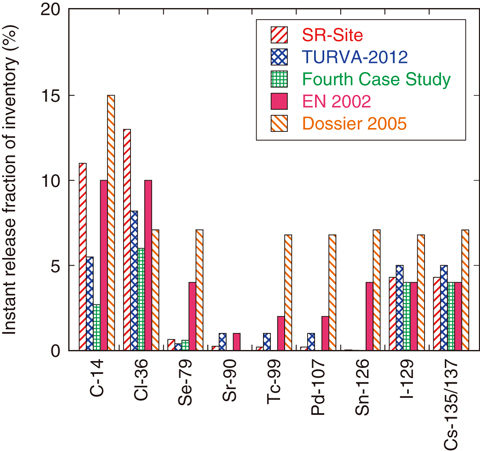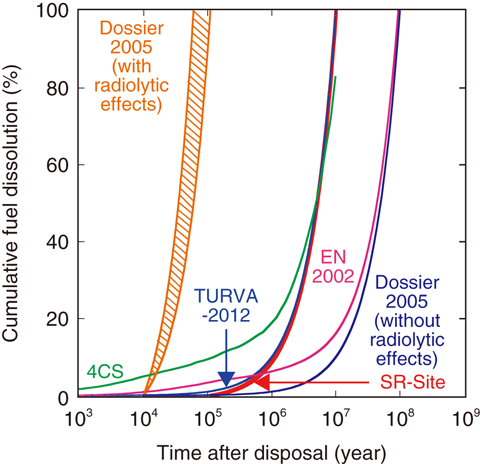
Fig.8-24 Example of the instant-release fraction (IRF) of inventory for PWR-UO2 fuels in various safety-assessment reports

Fig.8-25 Cumulative fuel dissolution as a function of time after disposal calculated with the fuel-dissolution rate selected in safety-assessment reports (reprint of Kitamura et al. (2016) with permission of the Atomic Energy Society of Japan)
We have conducted research and development on the disposal of spent nuclear fuel (SF) in deep geological strata (hereafter “direct disposal of SF”) as an alternative management option to reprocessing followed by vitrification and geological disposal of high-level radioactive waste (HLW). Evaluation of the release behavior of radionuclides (RNs) for direct disposal of SF is very important because the RN release behavior from SF is completely different from that of vitrified HLW owing to different waste matrices and inclusion of gaseous and semi-volatile RNs. There have, however, been only a few studies in Japan on direct disposal of SF owing to the Japanese strategy being that all SF should be reprocessed.
Therefore, we collected and compared source-term parameters on RN release from SF in deep geological repositories for selection of the parameters applied to the performance assessment of the Japanese SF disposal system. We picked up the parameters from several foreign safety-assessment reports, e.g., the Swedish SR-Site, the Finnish TURVA-2012, the Swiss EN 2002, the French Dossier 2005, and the Canadian Fourth Case Study (4CS).
There are two types of RN-release behaviors from SF; one is relatively faster release of gaseous and semi-volatile RNs and is parameterized as instant-release fractions (IRFs) of inventory. The other is long-term release that is congruent with dissolution of the UO2 matrix and other construction materials parameterized as “dissolution rates”. Examples of IRF and cumulative fuel dissolution as a function of time after disposal selected in the foreign safety assessment reports are shown in Figs.8-24 and 8-25, respectively. It was found that various IRF values were selected owing to a variety of SF properties (e.g., reactor types, fuel types, burnups) and handling of the most pessimistic case. A mechanistic understanding of RN-release behavior from SF has been drastically promoted since 2000; therefore, the selected parameters that apply those findings are similar to each other (SR-Site, TURVA-2012, and 4CS shown in Fig.8-25).
This study was a part of the “Project on the Research and Development of Spent Fuel Direct Disposal as an Alternative Disposal Option,” funded by the Ministry of Economy, Trade and Industry of Japan (METI) in FY 2015.